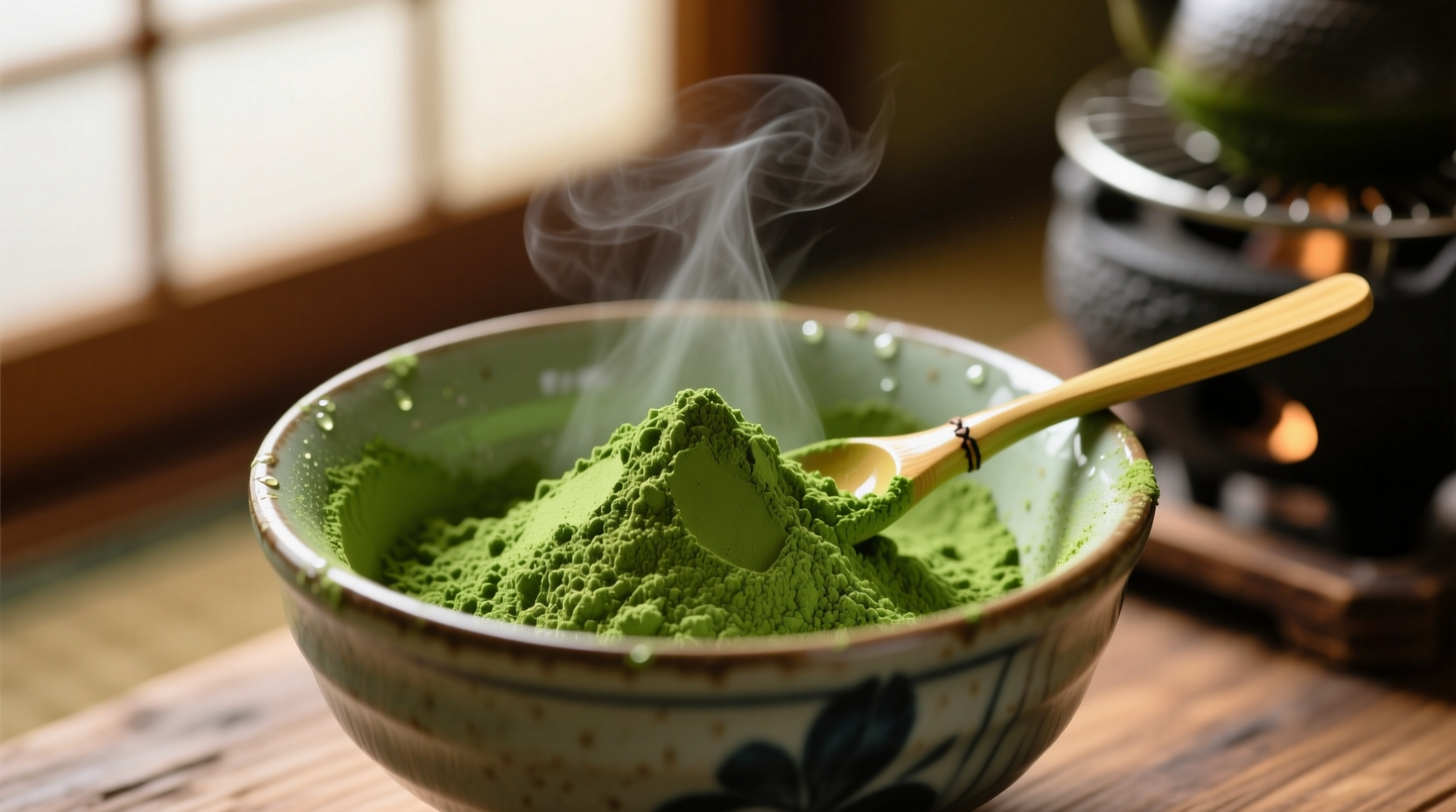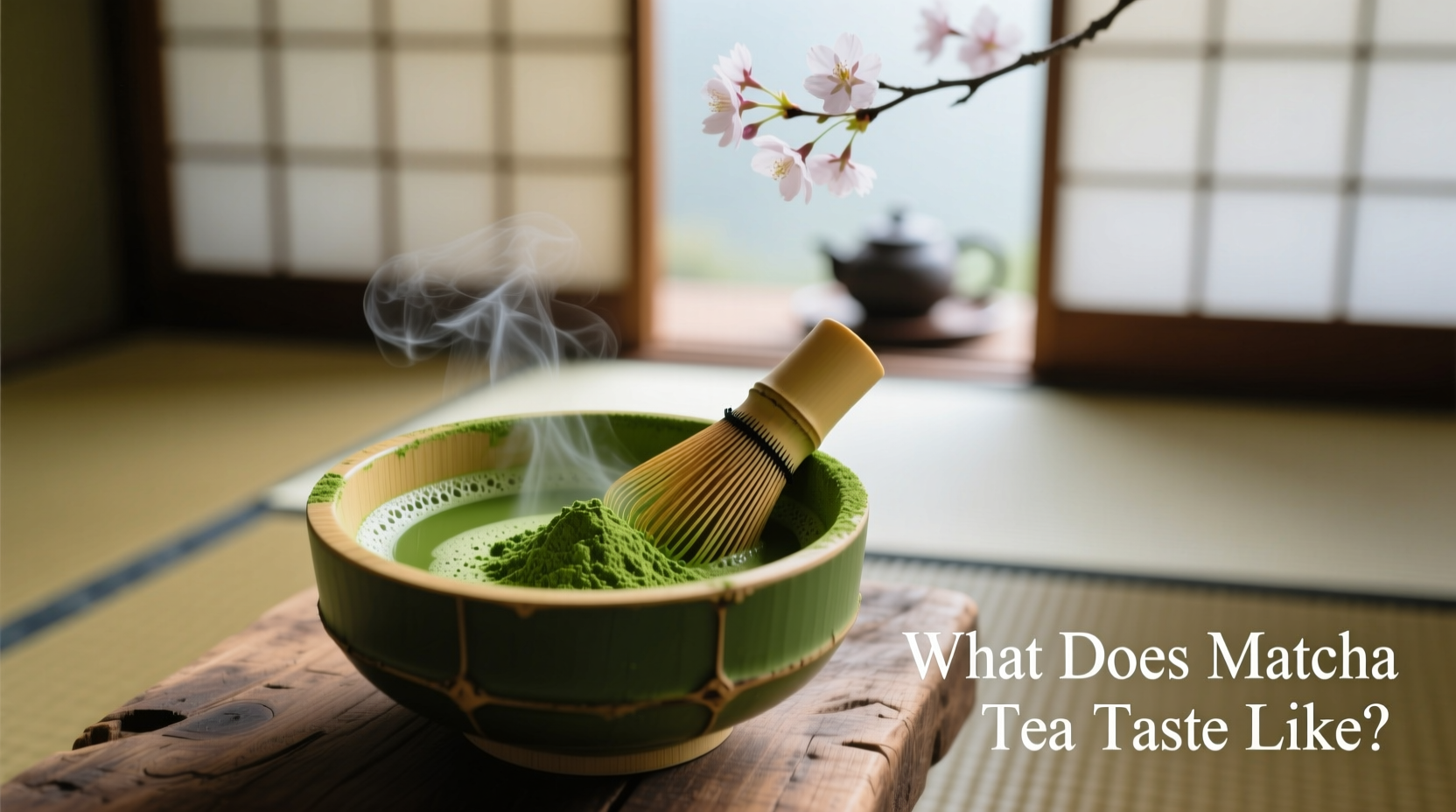If you've ever wondered what does matcha tea taste like before trying it, you're not alone. Many first-time matcha drinkers expect something similar to green tea bags but are surprised by its unique flavor complexity. Understanding matcha's taste profile helps you select the right grade, prepare it properly, and appreciate why this Japanese powdered tea has become a global sensation.
The Core Flavor Profile of Premium Matcha
When prepared correctly, high-quality ceremonial matcha delivers a multi-layered taste experience that evolves as it lingers on your palate. The initial sensation is often described as:
- Umami-rich - that savory "fifth taste" reminiscent of seaweed or fresh mushrooms
- Vegetal and grassy - similar to young spinach or steamed asparagus
- Slightly sweet - natural sugars emerge after the initial sip
- Creamy mouthfeel - unlike steeped teas, you consume the entire leaf
- Subtle astringency - a pleasant dryness that shouldn't be harsh
This distinctive flavor comes from the unique cultivation and processing methods. Unlike regular green tea, matcha plants are shaded for 20-30 days before harvest, which increases chlorophyll and L-theanine production while reducing bitter catechins. The leaves are then stone-ground into a fine powder, preserving their complete nutritional and flavor profile.
How Matcha Grade Dramatically Changes the Taste
Not all matcha tastes the same. The grade significantly impacts your sensory experience:
| Matcha Grade | Flavor Profile | Best For | Price Range (per 30g) |
|---|---|---|---|
| Ceremonial Grade | Delicate umami, smooth, sweet finish, minimal bitterness | Traditional tea ceremony, straight consumption | $25-$50+ |
| Premium Grade | Balanced umami and vegetal notes, slight astringency | Daily drinking, lattes | $15-$25 |
| Culinary Grade | Stronger bitterness, pronounced vegetal notes | Cooking, baking, smoothies | $5-$15 |
According to the Japan Tea Association, ceremonial grade matcha must meet strict standards for color, aroma, and flavor balance. Lower grades often use leaves from later harvests or different plant varieties that naturally contain more bitter compounds.
Regional Flavor Variations You Should Know
Just like wine, matcha's flavor varies by region due to soil composition, climate, and traditional processing methods:
- Uji (Kyoto) - Considered the gold standard with balanced umami and sweetness. The mineral-rich soil produces matcha with exceptional smoothness.
- Shizuoka - Slightly more astringent with pronounced grassy notes, often used in culinary applications.
- Saga - Known for vibrant color and strong umami character, with a clean finish.
- Nishio - Offers a unique balance of sweetness and vegetal notes, often described as having "broth-like" qualities.
Why Your Matcha Might Taste Bitter (And How to Fix It)
Many people's first matcha experience is unpleasantly bitter, but this usually results from preparation issues rather than the matcha itself. Here's what affects taste:
How Shading Process Affects Matcha Flavor Development
- 30 days before harvest: Farmers cover tea plants with shade cloths, reducing sunlight by 90%
- 20 days in: Chlorophyll production increases dramatically, creating vibrant green color
- 10 days in: L-theanine (umami compound) accumulates while catechins (bitter compounds) decrease
- Harvest time: Only the youngest, most tender leaves are picked for premium matcha
- Processing: Steaming preserves color and flavor, then stone grinding creates ultra-fine powder
Improper preparation often causes bitterness. The Umami Mart research shows water temperature above 175°F (80°C) extracts excessive catechins, creating harsh bitterness. Using too much powder (more than 1-2 grams per serving) also overwhelms the palate.
What Matcha Tastes Like Compared to Familiar Foods
If you're trying to imagine matcha's flavor, these comparisons might help:
- Like fresh spinach - but without the iron taste, with more complexity
- Similar to nori seaweed - that savory umami quality you find in sushi wrappers
- Resembles white asparagus - the delicate vegetal notes without strong bitterness
- Comparable to edamame - that fresh, green bean sweetness
- Different from green tea bags - matcha is richer, creamier, and more intense since you consume the whole leaf

How to Train Your Palate for Matcha Appreciation
Developing an appreciation for matcha's nuanced flavors takes practice. Here's a professional tasting technique:
- Observe the color - Vibrant emerald green indicates high quality; dull or yellowish suggests oxidation
- Smell the dry powder - Fresh matcha has a sweet, grassy aroma; stale matcha smells dusty
- Sip slowly - Let it coat your entire palate before swallowing
- Notice the progression - Initial umami, then vegetal notes, followed by sweet finish
- Assess the aftertaste - High-quality matcha leaves a clean, sweet finish lasting 30+ seconds
According to sensory studies published in the Food Chemistry Journal, matcha contains over 300 distinct flavor compounds—more than twice as many as regular green tea. This complexity explains why palate training enhances your appreciation.
When Matcha Tastes 'Off': Common Issues and Solutions
Sometimes matcha doesn't taste right. Here's how to diagnose problems:
- Bitter and astringent - Usually from water that's too hot or too much powder. Solution: Use 160-175°F water and measure precisely.
- Flat or dull flavor - Often indicates old or improperly stored matcha. Solution: Buy small quantities and store in airtight container in freezer.
- Grassy or hay-like - Can come from lower quality leaves or improper shading. Solution: Try a higher grade from a reputable source.
- No umami presence - May be from leaves harvested too late in season. Solution: Look for first harvest (ichiban-cha) matcha.
Remember that individual taste sensitivity varies. A 2017 study in Nutrients journal found significant differences in how people perceive catechin bitterness based on genetic factors. What tastes pleasantly bitter to one person might be overwhelming to another.
Final Thoughts on Matcha's Unique Flavor Journey
Understanding what matcha tea tastes like requires experiencing its full flavor spectrum. High-quality matcha offers a remarkable balance of umami richness, vegetal notes, and natural sweetness that evolves as you sip. The taste experience varies based on grade, origin, preparation, and your personal palate.
As you explore different matchas, pay attention to how factors like water temperature, whisking technique, and even the ceramic bowl you use affect the final flavor. This mindful approach transforms matcha from a simple beverage into a daily ritual that engages all your senses.











 浙公网安备
33010002000092号
浙公网安备
33010002000092号 浙B2-20120091-4
浙B2-20120091-4